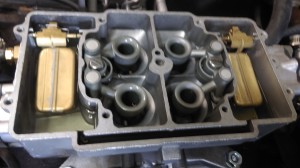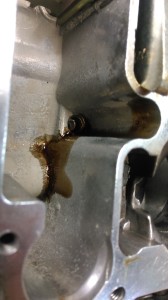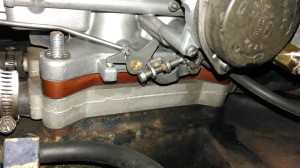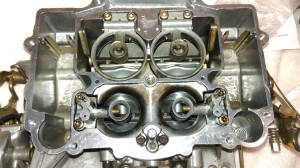Many people are able to run the original 4100 Autolite carb on their ‘Birds, but I’m not destined to be one of them.

I swapped out the phenolic spacer, replaced the studs and mounted the 4100 just as it came from the factory. The results were identical to the earlier attempts: the engine would start easily, but would only run at very high revs. It ran slightly better with the idle adjustment screws run all the way out—and not at all with them most of the way in.
All the evidence points to a vacuum leak of some sort, but after all the time and energy expended—flattening and repairing the base, repeated disassembly, etc—I still have no idea where the leak(s) might be.

So, I’m done with it.
I’ll donate the carb to my son’s shop class where it can spend the remainder of its years as a learning tool.
Turning my attention back to the Edelbrock, I turned it over trying to remove the check valve only to discover a thick, oily substance oozing from the main jets (and a few other places). Since there’s no way this could be actual oil, I’m assuming it’s some kind of gasoline residue—how or why I don’t know.
Parts of the carb are soaking in cleaner. The seals and gaskets look good, so I’ll try a clean-and-reassemble before I fork out money for a rebuild kit.


